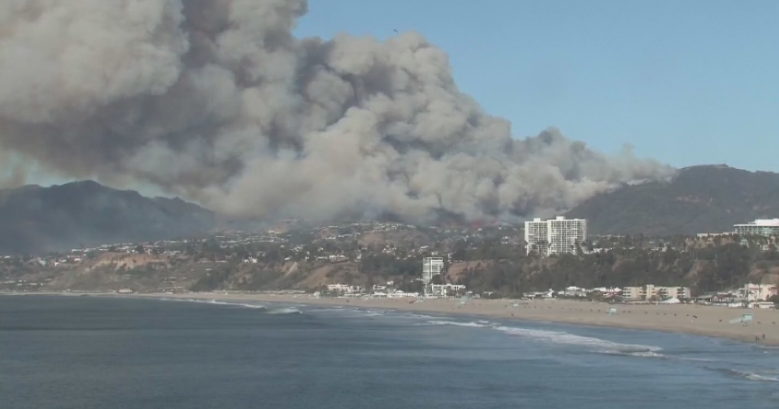For decades, Los Angeles has topped the list as the smoggiest city in the U.S., but now, climate change is fueling a new kind of pollution from toxic urban wildfires to heat-driven ozone and smoke that can travel thousands of miles.
“We’re seeing that air quality is highly affected by climate change and more specifically by wildfires, which are in urban areas, which involve a whole lot more toxicants than your forest fires that we normally experience,” said Glory Dolphin-Hammes, CEO of IQAir.
When homes and businesses burn, they release carcinogens far more dangerous than forest smoke.
“When we look at urban wildfires, we’re looking at homes, we’re looking at building materials, we’re looking at e-waste as well, electronic materials being burned, plastic being burned, Formaldehyde-based building materials also being burned, lead-based paint being burned,” Dolphin-Hammes said. “So, these are all high-level toxicants, cancer-causing on the highest level.”
These pollutants don’t just stay here. Smoke can travel across the continents, choking skies in its path.
“Wildfire smoke can travel pretty far, thousands of miles basically, we had the Midwest and the East Coast heavily affected by wildfires, not in the U.S., but wildfires that were based in Canada,” she explained.
The issues facing the planet aren’t just caused by smog. Extreme heat and high-pressure domes are literally trapping pollution in place, and climate change is making those events more common and more intense. Heat domes also supercharge ground-level ozone, the main ingredient in smog. That means more days when the air is unhealthy to breathe.
“This new era it is definitely driven by climate change,” she said. “Ozone that is basically heat-driven has been able to impact the air quality not in a positive way.”
Air quality can also change block by block. Freeway-adjacent neighborhoods often register pollution levels 10 to 15 points higher than communities just a mile away and in some areas, there are fewer sensors, making it harder to track.
“You’ve got what’s called your hyperlocal pockets,” Dolphin-Hammes said. “In some areas, especially marginalized areas, they actually have less monitoring, less sensors available.”
Experts said there are steps we can all take, but in a warming climate, now is not the time to lower the bar on regulations.
“Unfortunately, we are taking quite some steps backward. We breathe on average, 30,000 times a day, so in children, they breathe about 40,000 times a day,” she said. “When we do the math, our air quality is so much more important than we actually think.”
From communities to individuals, there are ways you can protect yourself in this new air quality crisis.
“What really drives and makes LA the worst in the U.S. in terms of major cities is actually our transportation,” Dolphin-Hammes said. “The biggest contributor to air pollution and transportation is the choice that we make to use our personal vehicles to travel around. City planners can help us to develop and build communities that are truly walkable.”
As the climate warms, the Earth is not just facing hotter days; there is a new era of dirty air.
Air pollution kills more people globally each year than smoking, and thousands of those deaths are in California. Protecting yourself starts with awareness. Check the air quality before you head outside and take steps to keep the air inside your home clean.
In Southern California, clear skies don’t always mean clean air.
More from CBS News

